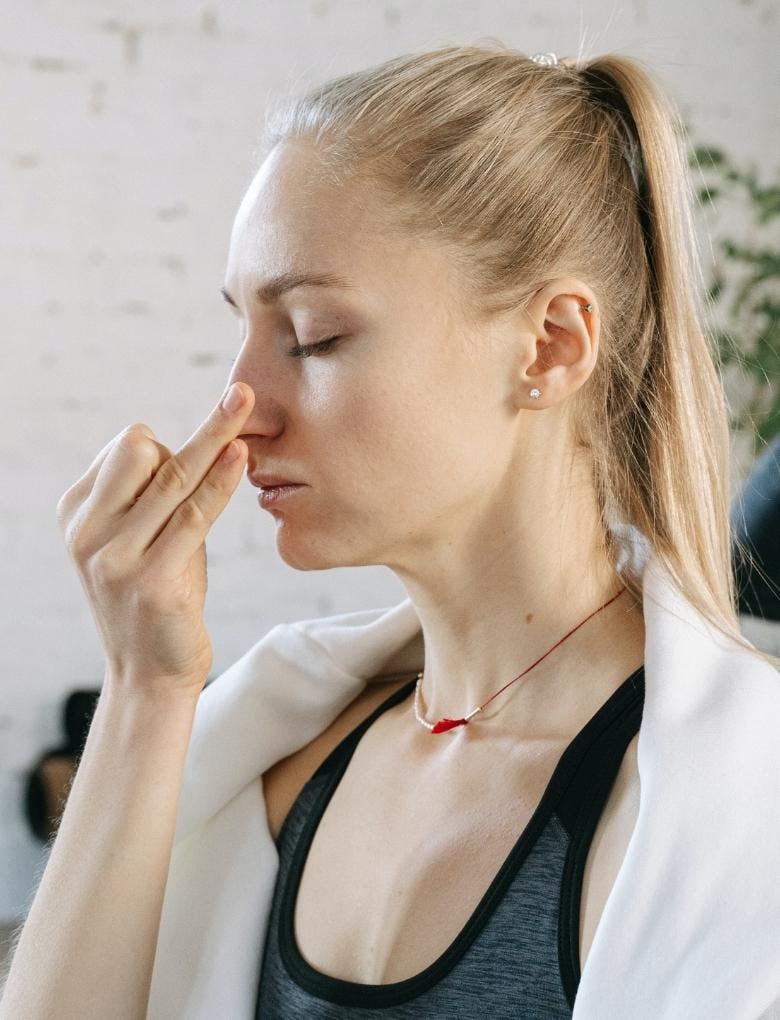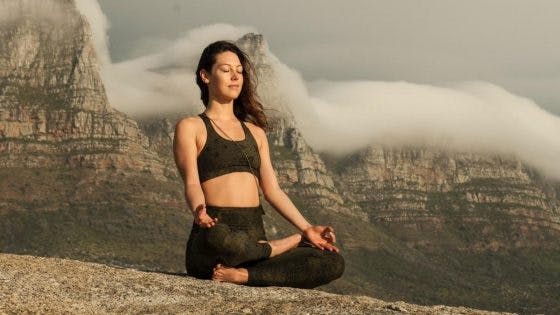How Breathwork Can Improve Your Wellbeing
6 minutes read
Breathing is a part of living we tend to take for granted. No one ever taught us how to do it, and surely, there’s no right or wrong way to breathe, right? While that is true, new ongoing research on the principles of breathwork dictates that there is a better way to use your breath.
We consulted Liz Lark, breath, mindfulness and yoga expert at Movementum, the new studio at London’s Mandarin Oriental, to help us understand what breathwork means and how we could use intentional breathing strategies to improve the quality of our lives.

What is breathwork?
“Breathwork is a practice that uses various breathing techniques to aid mental, physical and emotional health and wellbeing,” says Lark. “When we practice breathwork, we bring conscious awareness to our breath using focused and specific breathing techniques.”
There are various forms of breathwork, most of which involve deep breathing for extended periods.
The benefits of breathwork
“By cultivating a relationship with our breath, we learn to self-regulate the nervous system, enabling us to stabilise, energise and self soothe at will,” says Lark.
She explains that as breathing is a subconscious activity, the tendencies of the mind often override its natural patterns. But by bringing attention to our breath, we can train the mind to become more passive and perceptive. “Consequently, the mind stabilises and quietens. If the breath is agitated, so is the mind – breath mirrors the mind. Therefore, if we train the breath to become gentle, smooth, quiet, the mind will reflect this, like a full moon shining on a still lake.”
She adds: “Nitric oxide is increased in the blood with conscious breathing. Coherent breath (six counts inhale, six counts exhale) self regulates all the systems of the body, cultivating homeostasis and reducing stress-induced ailments of all kinds. This takes patience and practice, alongside conscious nutrition, relaxation, and exercise programme.”
“If you want to reap the rewards of breathwork, consistency is key,” Lark emphasises. “Adding just five minutes to your morning routine will benefit you mentally and physically, keeping you centred and grounded for the day ahead.”
Types of breathing and breathwork
There are many different types of breathwork practices – some practised alone, others in groups. Some require the guidance of a certified therapist, while other more straightforward breathing exercises can be practised alone.
“It’s worth exploring and finding an approach that suits your personal needs,” says Lark.
Below, we list some of the most popular breathwork techniques:
Wave breathing
This is also known as complete yoga breath. Lark explains: “a gentle awareness of smooth nose breathing, cultivating a balanced count in for four, out for four, from bottom to top of lungs and in reverse brings about wellbeing.”
Coherent breathing
Coherent breathing, gently increasing the count to six inhales and six exhales, in a relaxed way, is said to harmonise and nourish all systems of the body. “This is practised in a relaxed position, and lying down is great to facilitate the breathing diaphragm to relax. Singers do this in training to sing, to expand lung capacity.”
“To reduce stress, it is important to lengthen the exhalation, so gently practice inhaling for four counts, exhaling for six. This reduces stress, which is a cause of disease and imbalance. It also self-regulates and reduces anxiety by lowering blood pressure.”
Ocean breathing
Ocean breathing, also known as Ujjayi breath, is excellent for simultaneously soothing and energising the yoga pranayama (breath) to self-regulate the nervous system. Lark shares the steps to follow:
- Sit up tall with shoulders relaxed.
- Bring awareness to your throat and breathe in and out through the mouth – as if you were misting a mirror. On your exhales, begin to tone the back of your throat (your glottis or soft palate), slightly constricting the passage of air — whisper ‘ ha’, in and out.
- When you can control the throat on both the inhale and the exhale, close the mouth and begin breathing through the nose.
- Continue with a slow, smooth breath, breathing in for four, out for four. Continue applying the same toning to the throat that you did when the mouth was open.
- The breath will still make noise coming in and out of the nose. This is ujjayi breath – like the sea moving in and out from the shore (hence the name). This can be practised during exercise to help quiet the mind.
Apart from these breathing techniques, ‘breathwork’ often refers to a few holistic practices that have grown in popularity over the last few decades. They promise not just relaxation but also a version of spiritual healing. The most popular ones are:
Holotropic breathwork
Developed in the ’60s by Dr Stanislav and Christina Grof, this practice was created to allow practitioners to access deeper states of consciousness. It is performed alongside a certified facilitator, typically in groups. These sessions can go on for two to three hours. Loud music guides the breathwork.
In the end, participants discuss their experiences. The result is believed to help relieve stress and aid personal growth and healing.
Rebirthing breathwork
It was founded in the United States by Leonard Orr, who experienced memories of his birth when he first tried this practice. It typically involves an hour-long session with a certified instructor who guides participants to practice circular breathing (continuous breaths with no spaces in between).
The practice is meant to induce deep relaxation and an expanded state of consciousness. According to Rebirthing Breathwork International, “The altered state of consciousness allows for a more expanded perspective with added objectivity and neutrality. This combination makes the person feel safe enough for unresolved emotions and memories to surface.”
Similar forms of breathwork exist, including clarity, shamanic, biodynamic and transformational breathwork, among others. Each has its own set of rules.

Easy ways to practice breathwork at home
“If you’re new to breathwork, I suggest starting with daily diaphragmatic breathing – it’s simple and will help expand your lung capacity,” suggests Lark.
To perform it, follow these steps.
- Lie down on a flat surface or sit up straight.
- Place one hand on the middle of the upper chest.
- Place the other hand on the stomach, beneath the rib cage and above the diaphragm.
- To inhale, slowly breathe in through the nose, drawing the breath down toward the stomach. The stomach should push upward against the hand while the chest remains still.
- To exhale, tighten the abdominal muscles and let the stomach fall downward while exhaling through pursed lips. Again, the chest should remain still.
“If you practice for just five to ten minutes a day, you will become more comfortable with diaphragmatic breathing,” says Lark. “You can start switching it up and different techniques for your daily needs. For example, the 4-7-8 technique helps downregulate your nervous system if you’re feeling anxious or nervous. Whereas Box Breathing will help to reset and regulate your nervous system, so you feel calm and centred for the day ahead.”
Potential dangers of breathwork
While simple breathing exercises are considered safe for most of us, techniques like Holotropic breathwork and rebirthing breathwork come with their set of caveats. They could cause hyperventilation, which could lead to dizziness, heart palpitations, or muscle spasms. According to GoodTherapy, “prolonged hyperventilation can lead to decreased blood flow to the brain, clouded vision, ringing in the ears, and possible cognitive changes.”
In addition, pregnant women and people with a history of aneurysms, cardiovascular difficulties, high blood pressure, visual problems, osteoporosis, or any recent physical traumas or surgery should avoid intense forms of breathwork or consult a healthcare provider first.
Next read: How to Sleep Better: The Bedtime Routine To Try Now
Sign up for our newsletter
We will keep you in the loop for special offers, exclusive gifts and product news.

